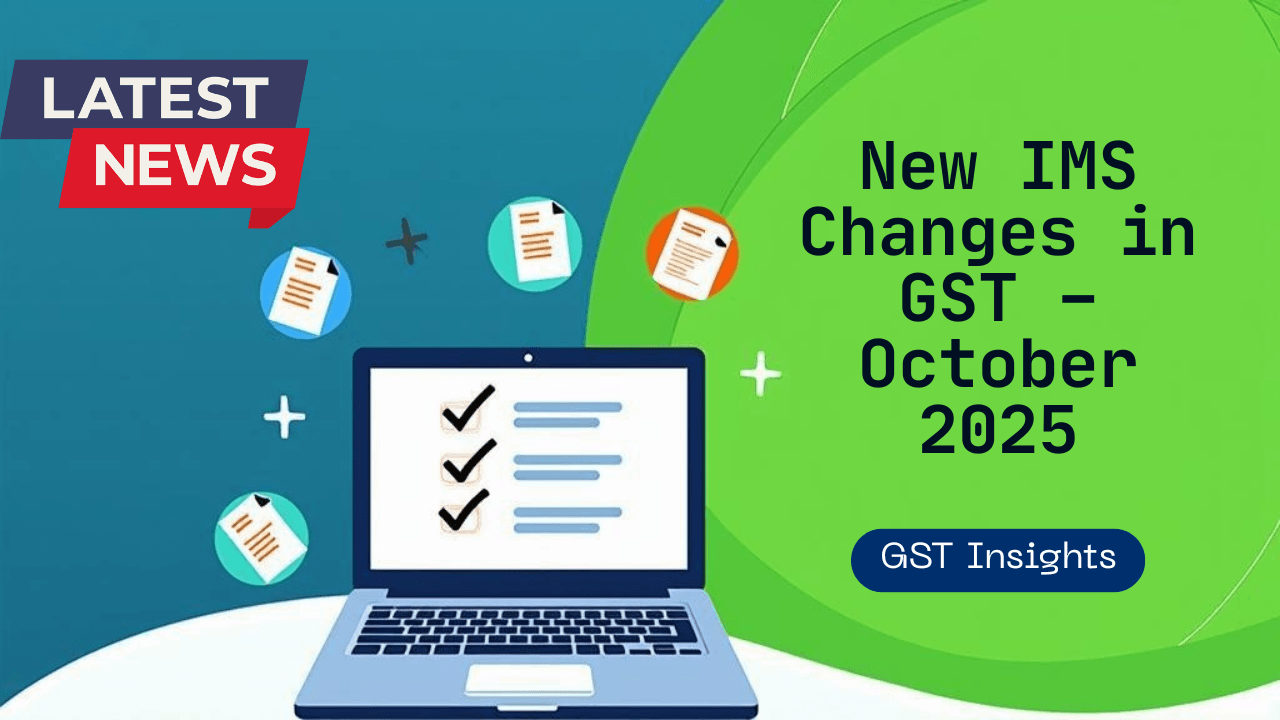GST Update: New Changes in Invoice Management System (IMS) Effective October 2025
The Goods and Services Tax Network (GSTN) has issued an advisory regarding new updates in the Invoice Management System (IMS) to make GST compliance easier for taxpayers. These changes aim to reduce unnecessary burdens, give more flexibility in handling invoices and credit notes, and improve transparency between buyers and suppliers.
Let’s understand the key highlights of these updates in simple words with examples.
1️⃣ Pending Action for Specified Records
Taxpayers will now have the option to keep certain records pending for one tax period:
Monthly taxpayers → can keep records pending for one month.
Quarterly taxpayers → can keep records pending for one quarter.
Records that can be kept pending:
Credit Notes (CN) – or upward amendments of CN.
Downward amendment of CN where the original CN was rejected.
Downward amendment of Invoices / Debit Notes (DN), only if the original invoice was accepted and GSTR-3B filed.
ECO-Document amendments, where the original was already accepted, and GSTR-3B filed.
💡 Example: Suppose a supplier issues you a Credit Note in September, but you need time to reconcile it with your books. If you are a monthly filer, you can mark it as pending and resolve it in the September return (due in October).
2️⃣ Declaring ITC Reduction Amount
Earlier, taxpayers faced confusion when they had not availed Input Tax Credit (ITC) fully or partially on a particular invoice. Now the rules are clear and simplified.
If ITC was not availed at all, no reversal is required.
If ITC was availed partially, only that part needs to be reversed.
The IMS portal now allows you to declare the actual ITC availed and reverse only that amount.
💡 Example:
You received an invoice of ₹1,00,000 with GST ₹18,000.
You availed ITC of only ₹10,000 (not the full ₹18,000).
If a Credit Note of ₹18,000 comes, you only need to reverse ₹10,000 (the ITC you actually availed).
This makes compliance more accurate and fair.
3️⃣ Option to Save Remarks
Another helpful feature is the ability to add remarks when you mark a record as Rejected or Pending.
These remarks will be visible in your GSTR-2B and also on the supplier’s dashboard.
It helps suppliers understand why a record was rejected or pending so that they can take corrective action.
💡 Example: If you reject an invoice because the GSTIN is wrong, you can add the remark “Wrong GSTIN, please correct”. The supplier will immediately see this in their outward supply view.
📅 Effective Dates
These new changes (keeping credit notes pending and declaring ITC amounts) will be live on the GST portal from the October 2025 tax period.
The due date for pending records will depend on when the supplier filed the document.
The changes are prospective, meaning they will apply only to records filed after the rollout date.
✅ Why This Change Matters
Helps taxpayers avoid unnecessary ITC reversals.
Reduces disputes between buyers and suppliers by allowing remarks.
Provides flexibility to manage credit notes and amendments properly.
Improves accuracy of GSTR-2B reconciliation.
📌 Final Takeaway
The new changes in the Invoice Management System (IMS) are a welcome step towards making GST compliance simpler, fairer, and more transparent. Taxpayers should carefully review invoices and credit notes in October 2025 and onwards to ensure proper reporting.
At TaxGyany, we help businesses and professionals stay updated with GST changes, file returns accurately, and avoid penalties.
📞 Need Help with GST Compliance?
Contact us today:
Phone: 730 430 7888
Email: info@taxgyany.com
🌐 Website: www.taxgyany.com

